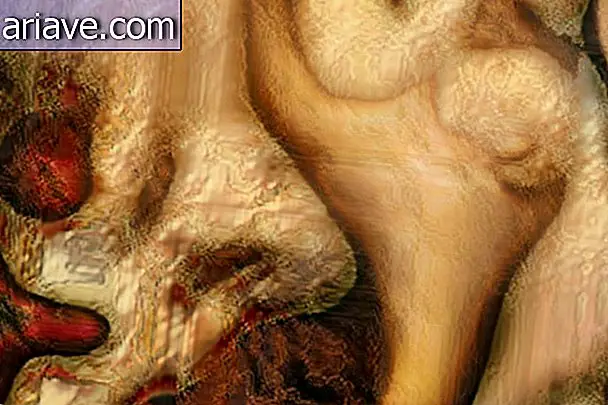Did you hear that they discovered a “new organ” in the human body?
Look what a curious thing ... although many focus their attention on unraveling the mysteries of the universe, no one to think that our own body still holds secrets! Just last year, as we at Mega tell us here, a team of scientists announced the discovery of a new organ, the mesentery, and now history repeats itself, with the identification of another structure in the organism.
Those responsible for the "discovery" are researchers at the New York University School of Medicine and it is a structure they called the interstitium. But, see, dear reader, of course, we are not talking about an organ that simply "budded" into the human body from one moment to the next or that has gone unnoticed for centuries. In fact, it has always been within us - and it was only the understanding of its operation and importance that changed thanks to the technological advances applied to medicine.
Anatomical "novelty"
Among the tissues in our bodies is a space filled with cavities known as interstitial layers. This structure had been known to scientists for a long time, and until now scientists believed that it simply consisted of a solid, dense connective tissue that lay beneath the skin and around our organs.

However, the New York University team, using a new technique of microscopic endoscopy, found that the layers actually form a complex network of countless tiny fluid-filled compartments. In addition, the researchers found that this structure, in addition to being located beneath the surface of the skin and involving arteries, veins, the lungs, the digestive tract and the fibrous structure where muscles attach to bones, is supported by a species. "mesh" made of elastin and collagen.
What's more, this network is so extensive that scientists are considering it as the newest and largest organ in the human body. But if we are talking about such an impressive structure, how has it not been identified before? The discovery came by chance when scientists were testing the new equipment, called Confocal Laser Endomicroscopy, which consists of a microscopy technology based on the use of laser and fluorescent pigments to examine living tissue.

More specifically, researchers were examining a patient's bile ducts when they noticed the curious network of fluid-filled cavities - a structure of which there were no descriptions in the medical literature. What happens is that prior to the emergence of this new technology, microscopic analysis of tissues eventually caused cellular dehydration and, therefore, the network was seen as something solid and dense in the exams.
Importance
And don't think that identifying the "new organ" simply represents a new framework that doctors and medical students will have to learn about. The team found that the interstitium acts as a kind of elastic shock absorber that protects the organs and tissues of the body and prevents them from being damaged or ruptured.

In addition, the researchers believe this structure may be related to stiffening of the extremities, aging of the skin and progression of inflammatory conditions. Another important possibility is that the interstitium acts more or less like a pre-lymphatic system, draining fluids throughout the body. If so, this structure could be directly related to the occurrence of metastases - which occurs when cancer spreads throughout the body.











